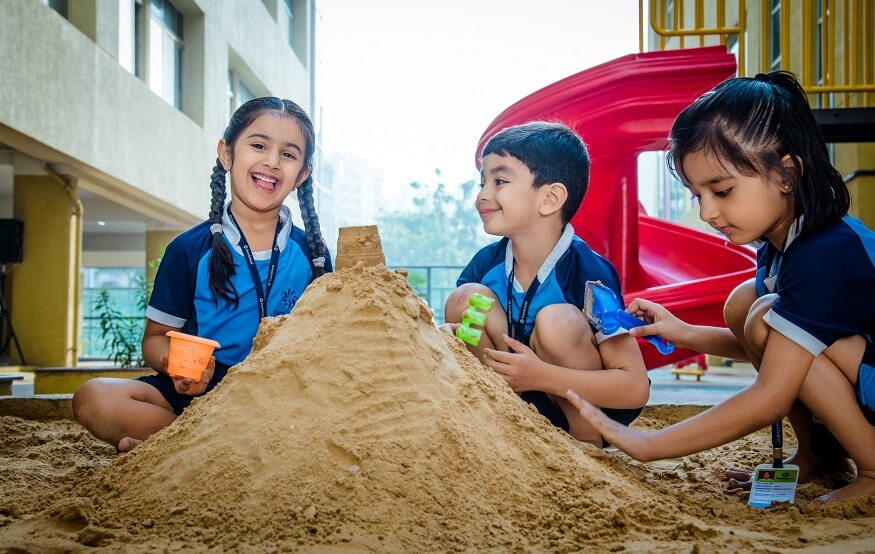Playing is an integral part of a child’s physical and social development. Hence, providing children with a safe environment to play in becomes essential for parents. An indoor playground at home will take away all the worry about children getting hurt during their playtime. But where does one start? There are several factors to be considered when designing a safe play area for your child at home.
Right from selecting the right location, to picking age-appropriate equipment, to ensuring adequate supervision. In this blog, we guide you through everything you need to know to make the playground at home safe and secure for your child.
Choosing the Right Location for a home playground
Children love to play and explore, without understanding the potential dangers in their surroundings. Hence assessing the space and selecting the right location is the first step to creating a safe home playground. Below are a few points to keep in mind when identifying a safe playground space:
Understand and assess the space requirement
When identifying a space for the home playground, keep in mind the need for children to run around and play. Assess the space accordingly required per the age and energy of your child as well as the space the equipment would require. As a general rule of thumb, avoid overcrowding and have at least 6 feet of space between each piece of equipment.
Identify the potential hazards
Do a recce of the space for any potential hazards, such as sharp objects, tree roots, or uneven ground. Remove any hazards you find and level the ground if necessary. Also, make sure there are no low-hanging branches or power lines overhead. Inspect the space regularly to ensure there are no loose screws, nails or other sharp objects lying around.
Identify a space within your visibility range
Pick an area that is visible from inside the house, so you can keep an eye on your child while they play. Consider fencing the area to prevent your child from wandering off while playing.
Selecting the right play equipment for a home playground
Once the space is finalised and evened out, it is time to choose the equipment you want to install. Here are a few things to consider when choosing equipment:
Age-Appropriateness
Make sure the equipment used in the home playground is age-appropriate for your child’s age and developmental level. Check for the manufacturer’s age recommendations making a purchase. Ensure that the pieces of equipment you choose are simple, engaging and fun for them. Look for equipment that is sturdy and safe and is equipped with safety features which can be used or engaged to avoid any incidents.
Regular Maintenance
Ensure that equipment is installed as per the guidelines given in their assembly manuals and maintained regularly for any signs of wear and tear, loose nuts and bolts and sharp edges as per the recommendations in the manual.
Choose equipment made of the right material
Look for equipment made of non-toxic and durable materials that can withstand rough play and frequent use when making a purchase. Check the manufacturer’s manual for the material used to avoid buying any equipment that could be hazardous to the child.
Check the environment in and around the home playground
Having chosen the space and the right equipment, it is time to consider the kind of surface available beneath the equipment to ensure your child can play without any risks. Below are a few things you can do to ensure a safe play area:
Install protective surfaces
Install protective surfaces such as around the equipment to cushion any falls. Surfaces such as soft rubber, sand pits or pea gravel could ensure a cushioning effect for the child in case of any falls. The protective surface should be at least 6 inches deep to be effective.
Ensure the equipment is safely and firmly secured
Use anchors or concrete to secure the equipment in place and avoid any wobbling or tipping over. Ensure the equipment is installed on a level surface, anchored securely to the ground and is not loose and wobbly. Avoid installing any equipment on surfaces such as loose gravel or sand.
Set safe play rules and guidelines
Set out safe play rules and guidelines for your child to use the playground, such as no pushing or climbing or jumping on equipment that is not meant for these activities. Educate your child about the precautions to take near the equipment’s moving parts. When using swings secure their seats to the frame that should be firmly anchored to the ground. Keep sufficient space for children to swing back and forth without their legs hitting any obstacles around when they are seated on the swings.
When using slides, ensure it does not get too hot from the sunlight to avoid burns and handrails are provided to them for support when they slide down.
Maintain cleanliness
Keep the playground clean and free from any debris lying around such as withered leaves, sharp twigs, big logs and broken glass pieces. Create designated areas in the playground to store loose things such as balls, and skipping rope.
Supervise the playtime
Ensure children are always under strict adult supervision when at the playground. Keep a first-aid kit handy in case of any accidents or injuries. Appreciate and reward them for following the rules. Explain to them the safety guidelines and report any hazards they may come across during play.
Conclusion
Creating a safe playground at home is a great way to provide your child with a fun and accessible outdoor activity while ensuring their safety. By choosing the right location, and equipment, and implementing safety measures, you can create the perfect play space for your child. Remember, safety should always come first, so take the time to make sure your playground is clean, safe and secure.
At EuroSchool, the safety of our students is of utmost importance and creating a secure playground is one way to ensure that. Visit our nearest branch to know more.









